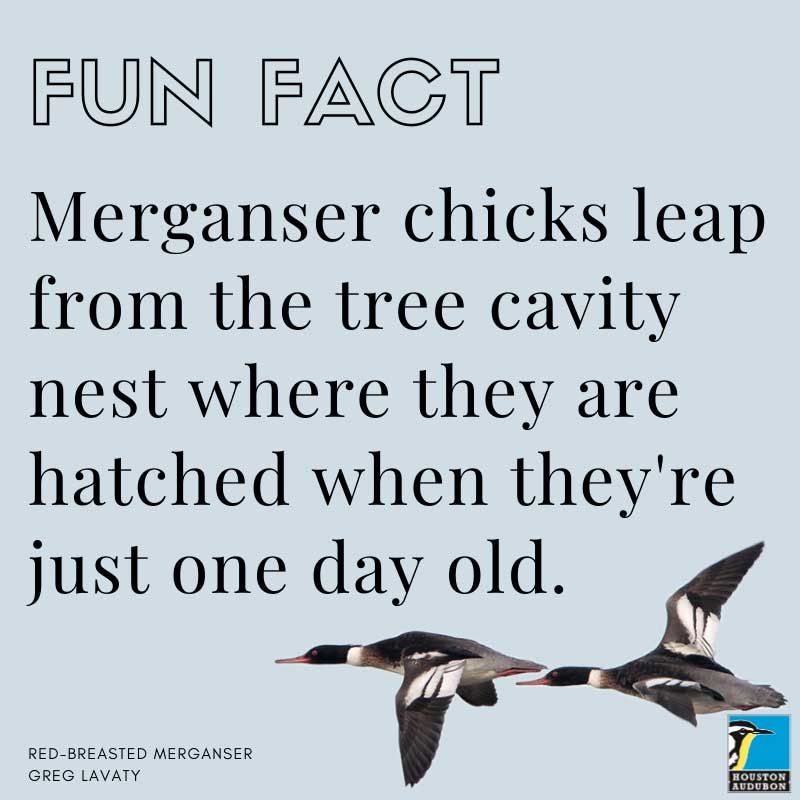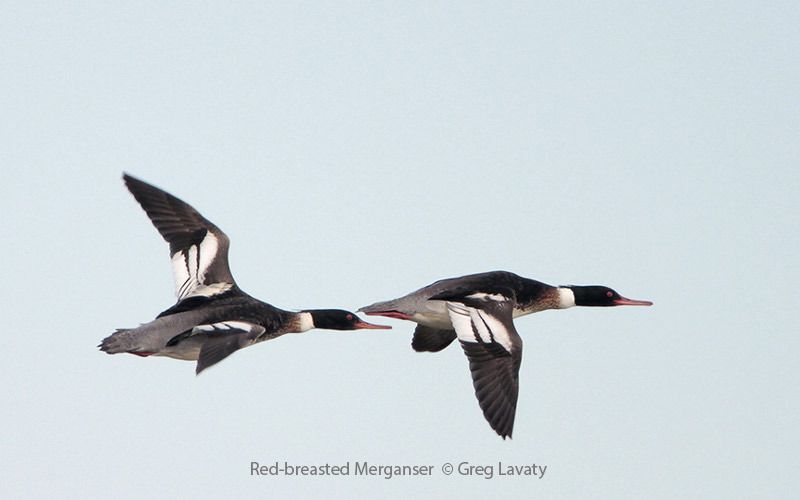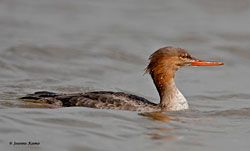
© Joanne Kamo
Red-breasted Merganser
Mergus serrator
Family: (Anatidae) Ducks, Geese, and Swans
Preferred Habitat: Bays, large lakes.
Seasonal Occurrence: Common November through April.
Profile by Richard Gibbons: The Red-breasted Merganser is a member of the duck family. This species is slender with a long frame and a shaggy, uncombed looking head. Males have a deep green head, a white ring around their neck, and a distinct red bill. Female Red-breasted Mergansers lack the rich coloration of males and have a duller red head with an orange or muted red bill. Both males and females can be identified while in flight by the large white patch on the inner wing, white bellies, and their swift, almost mechanical-like wing beats.
This species of Merganser is very well adapted to aquatic life. Their legs are located towards the rear of their frame which makes it difficult to get around on land. The placement of their legs assists them with getting a running start on the water, which helps them to be some of the fastest flyers of all waterfowl. They have even been recorded flying over 80 miles per hour!
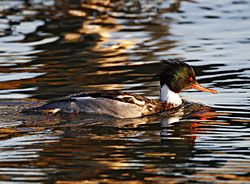
© David McDonald
During breeding season, Red-breasted Mergansers are common in the northern portion of North America, primarily in boreal forests as well as in areas of open water in the tundra region. They can be found during the winter months in lakes, rivers, or any other type of open water near the coast. They seem to prefer salt water more than the similar species, Common Merganser, which typically prefer freshwater habitat.
While nesting, female Red-breasted Mergansers choose areas with vegetative cover near rivers, streams, lakes, or marshes. They excavate a small cavity in the ground and fill it with small vegetation as well as their own feathers for insulation.
Red-breasted Mergansers use their serrated bills to forage primarily for fish in shallow waters but they have also been known to consume crustaceans and a variety of aquatic insects. They have also been observed hunting as a group to heard schools of small fish into shallow waters where they can be easily snatched up without diving. Look for them floating or foraging for fish next time you are at Bolivar Flats!
Profile by Charlie Ayers: The Red-breasted Merganser has a long, thin bill with serrated edges like a bread knife! Males of this species have green heads with a hairdo that resembles a punk rocker, a white neck band and a mottled red breast. They have black backs and wings with bright white patches that can be seen in flight. Females are a little duller with a red head still rocking the signature shaggy mohawk, a white breast, and grey back and wings with large white patches.
Red-breasted Mergansers are some of the fastest flying ducks in the world, reaching speeds of up to 81 mph! To do this, they need a running start like a Loon. Their feet are positioned farther back on their bodies, making it difficult to walk on land or very fast on water. This means they need a lot of room to run in order to get in the air and fly at those amazing speeds. While their leg positioning doesn’t help them in that regard, it is massively helpful with diving. Diving is a Merganser’s preferred method of hunting. Red-breasted Mergansers hunt in shallow waters for small fish, and the serrated bill mentioned earlier comes in handy to add an extra bit of grip when catching the small, slippery fish.
Red-breasted Mergansers are long distance migrants, breeding high in the boreal forests of Canada and Alaska, overwintering along the coastline of the United States and Mexico. To find a Red-breasted Merganser for yourself, look out to the ocean or in the bays that surround the Bolivar Peninsula. Great places to look for these diving ducks are Bolivar Flats Bird Sanctuary, Frenchtown Road on the Bolivar Peninsula, and at Gast Woods where the forest opens up out towards the bay.
-
Cornell Lab of Ornithology
-
Bird Guide
-
Bird Library
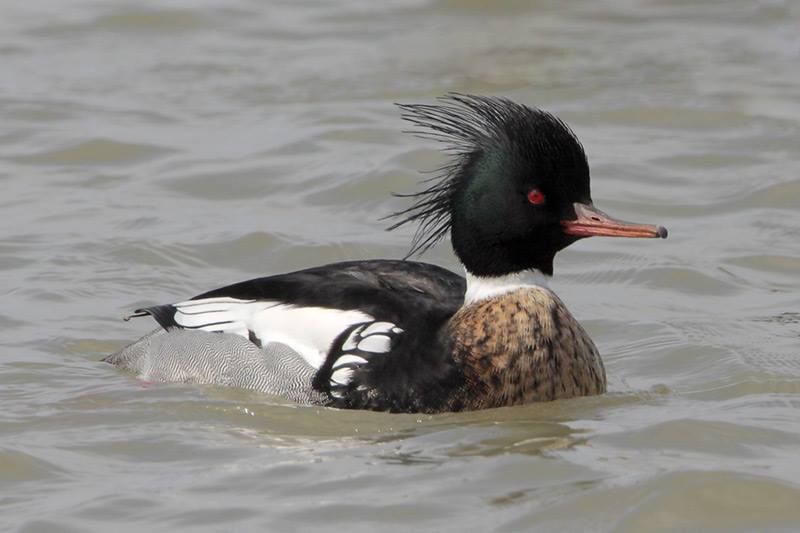
© Greg Lavaty
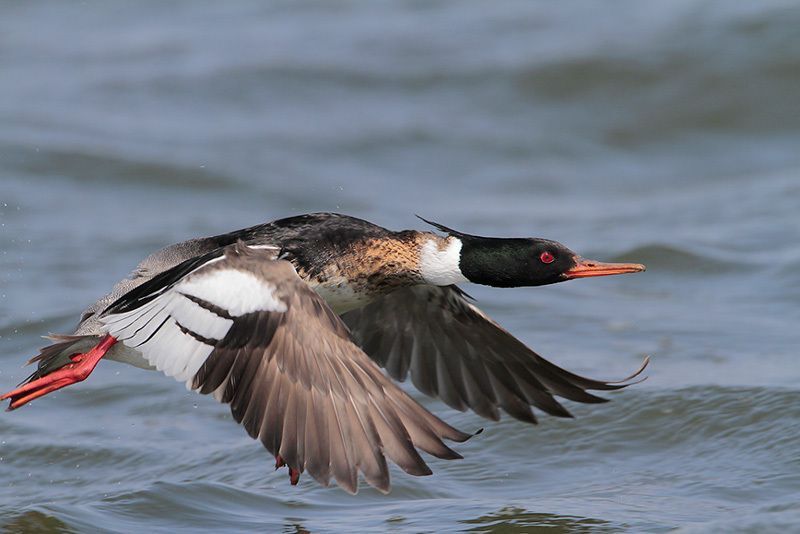
© Greg Lavaty, www.texastargetbirds.com
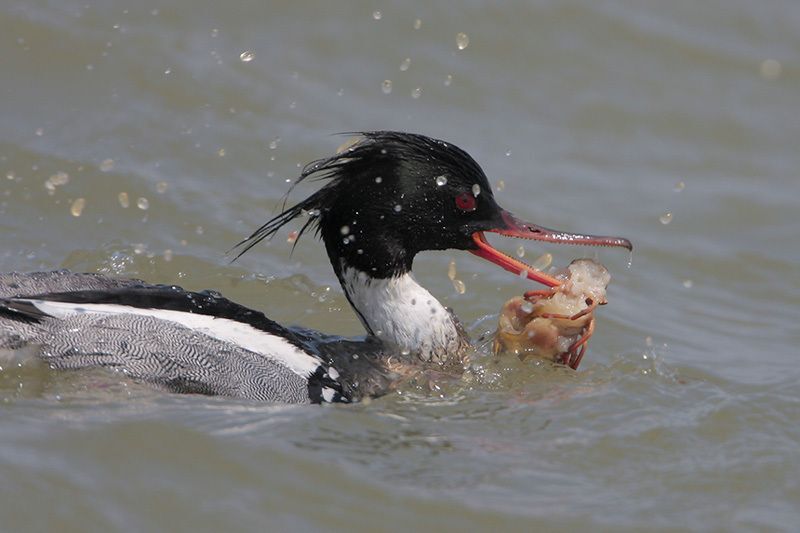
© Greg Lavaty, www.texastargetbirds.com
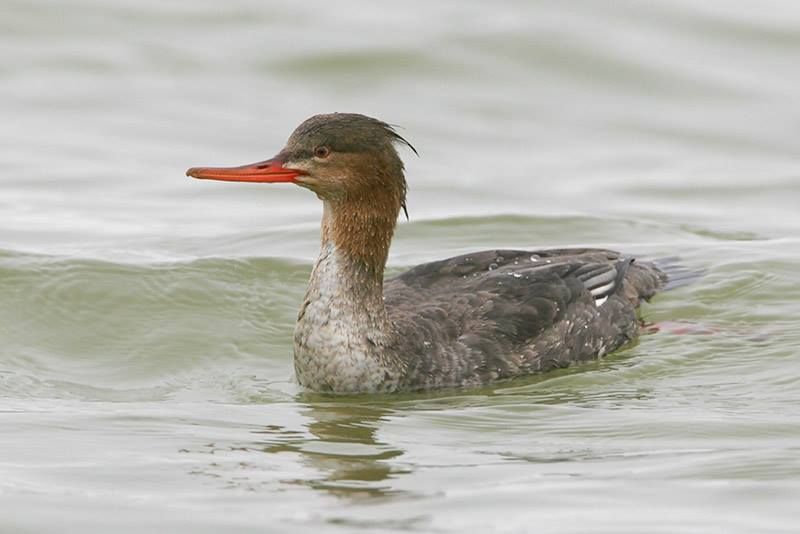
© Greg Lavaty
